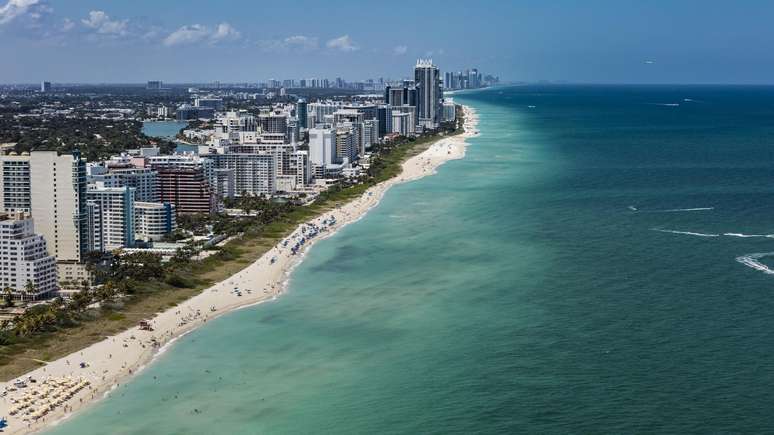Heatwaves aren’t just a phenomenon felt on land. The ocean also suffers a similar effect, with serious consequences for the planet’s climate.
June and the first days of July were the hottest on record, according to the World Meteorological Organization.
Residents of the southern United States and southern Europe faced sweltering temperatures, numerous heat warnings, wildfires and severe deterioration in air quality.
Records, however, were not only broken on land, but also in the water.
Global ocean surface temperatures were warmer than any other month in June, according to a report by the European Union’s Copernicus Climate Change Service, which recorded particularly high satellite readings in the North Atlantic.
Last month it also set a record for data collected by the National Office of Oceanic and Atmospheric Management (NOAA). It was the largest difference between forecasted and actual temperatures ever recorded.
Florida water temperatures have been particularly warm. And the researchers also tracked a large marine heatwave off the west coast of the United States and Canada that formed in May.
While the heatwave has already abated in the northeastern Atlantic, according to scientific NGO Mercator Ocean International, another one in the western Mediterranean appears to be intensifying, particularly around the Strait of Gibraltar.
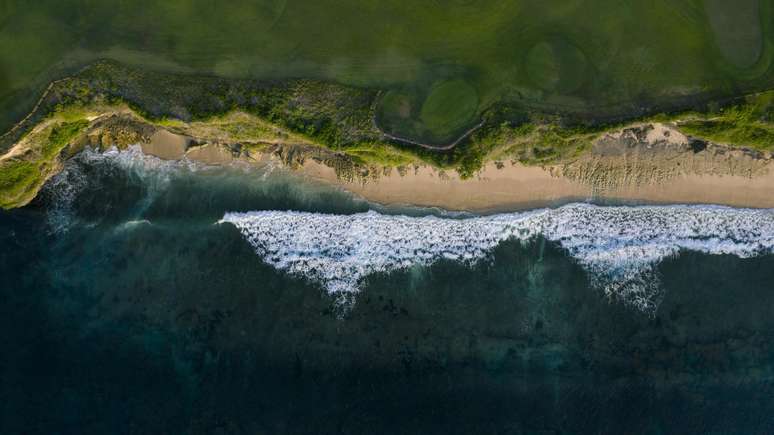
Extreme sea temperatures have also been observed in Ireland, the United Kingdom and the Baltic Sea, as well as in areas close to New Zealand and Australia. More recently, scientists have come to suspect the existence of a possible heat wave south of Greenland in the Labrador Sea.
“We’re having these huge marine heat waves in different parts of the ocean that evolve unexpectedly early in the year, very strong and over large areas,” says Karina von Schuckmann, oceanographer at Mercator Ocean.
‘Without precedents’
Carlo Buontempo, director of the European Union’s Copernicus Climate Change Service, says scientists expect large temperature swings in the Pacific Ocean associated with the El Niño weather pattern.
According to him, this new phase of global warming has just begun, even though NOAA has been tracking a major heat wave in the Gulf of Alaska since 2022.
But what we’re currently seeing in the North Atlantic is truly “unprecedented,” says Buontempo.
Scientists are still trying to figure out all the causes.
Short-term changes in regional oceanic and atmospheric circulation patterns can provide the conditions for periods of intense marine heat for weeks, months and even years.
But the long-term increase in ocean temperatures, driven by increased greenhouse gas emissions, is a key driver in recent heatwaves.
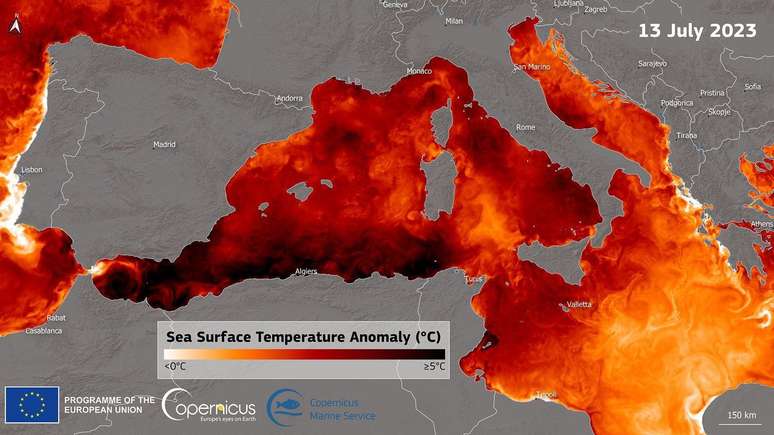
About 90% of the excess heat generated by human-caused climate change has been stored in the ocean, and the rate of heat accumulation in the Earth’s climate system has doubled in the past two decades.
A 2021 report from the Intergovernmental Panel on Climate Change (IPCC) found that marine heatwaves had doubled in frequency between 1982 and 2016 and had gotten more intense and longer since the 1980s.
Another possible contributing factor is the volume of aerosols in the atmosphere, which have a slight cooling effect but appear to have decreased following attempts to contain pollution emitted by the shipping industry.
More recently, there has been an unusual decrease in the Saharan dust clouds that normally cause the cooling.
It could be worse
Currently recorded marine heatwaves could get even worse. Although some researchers do not believe that El Niño itself is the driving factor behind the situation in the North Atlantic, the WMO argues that the phenomenon contributes to the warming of the oceans in general.
Experts are still concerned that heatwaves could affect ocean life, fisheries and weather conditions.

Record temperatures on Australia’s west coast during the summer of 2010/2011 resulted in “devastating” fish deaths and destroyed kelp forests, as well as dramatically changing coastal ecosystems.
Several years later, in 2016, an unprecedented marine heat wave caused by climate change and amplified by a strong El Niño led to the worst coral bleaching ever seen on the Great Barrier Reef.
Heatwaves can trigger coral bleaching events and are already increasing the stress on coral reef ecosystems around the world.
High temperatures can cause coral polyps to expel the zooxanthellae that live in their tissue, making them white and more vulnerable to disease and other threats.
In the Mediterranean Sea, exceptional temperatures between 2015 and 2019 caused repeated events of mass deaths of key species such as corals and algae.
A recent study described marine heat waves of this type as “causing widespread stress to global marine ecosystems.”
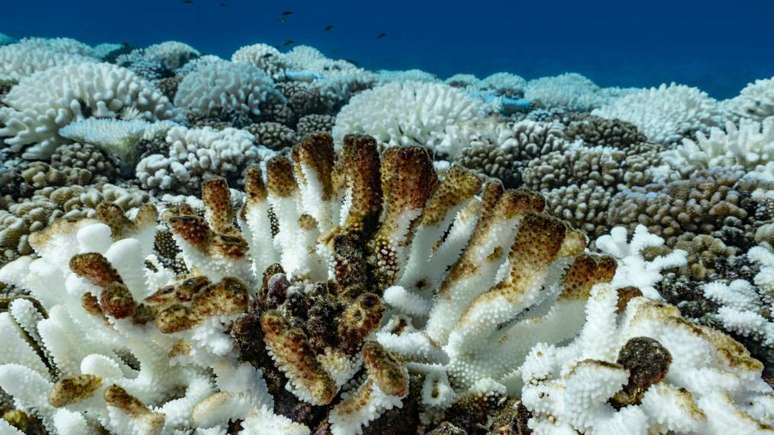
Marine heat waves also facilitate the proliferation of invasive species.
Japanese seaweed, for example, flourished in New Zealand when a 2017-2018 heat wave in the Tasman Sea destroyed the area’s native seaweed.
Dan Smale, a marine ecologist at the UK Marine Biological Association and a member of the International Marine Heatwave Task Force, says ‘short, rapid shocks’ don’t give species time to redistribute, and those that are at the limit of their body capacity are particularly at risk.
Around the British coast, which is not considered an extreme environment and where scientists expect ecosystems to change gradually, a summer-long marine heatwave can be deadly.
However, there’s still a lot to learn about the impact of marine heatwaves versus those that occur on land, because monitoring is more difficult and long-term records are lacking, says Smale.
“The information satellites have been giving us since the early 1980s is fantastic… the problem is when we try to go further,” he says.
Warm oceans for a while
A significant decline in the amount of phytoplankton has already been observed in the North Atlantic, something Mercator Ocean attributes to recent heat waves.
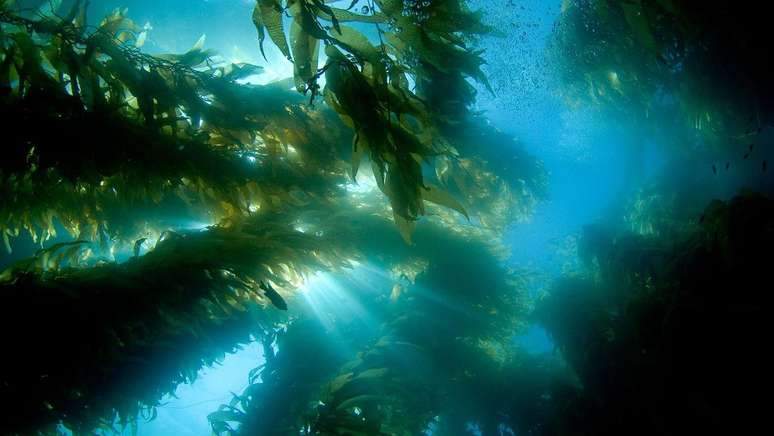
Spring flowering is critical because it provides most of the energy needed to sustain the marine food web in the area and contributes substantially to the global uptake of CO2 from the oceans.
The regional fishing economy could also suffer.
A heat wave in the northwest Atlantic in 2012 caused species that prefer warm waters to move north, migrating earlier than usual and changing when and how much CO2 was captured.
The North Atlantic is also a major driver of extreme weather.
High ocean surface temperatures can lead to hurricanes, though whether an El Niño will exacerbate or mitigate this effect next year remains to be seen.
On the other hand, the warmth of the North Atlantic waters is the most important factor behind the alternating cycle between drought and heavy rains in central Africa.
Overall, experts believe that the persistence of recent marine heatwaves is a worrying sign of how climate change is co-evolving alongside land-based heatwaves, unusual snowmelt in the Himalayas and loss of sea ice.
Von Schuckmann says that even if humans stopped emitting CO2 altogether tomorrow, the oceans would continue to warm for years to come.
“As a climate scientist, I’m concerned that we’ve gone further than we thought.”
Read the original version of this report (in English) on the BBC Future website.
Source: Terra
Rose James is a Gossipify movie and series reviewer known for her in-depth analysis and unique perspective on the latest releases. With a background in film studies, she provides engaging and informative reviews, and keeps readers up to date with industry trends and emerging talents.

